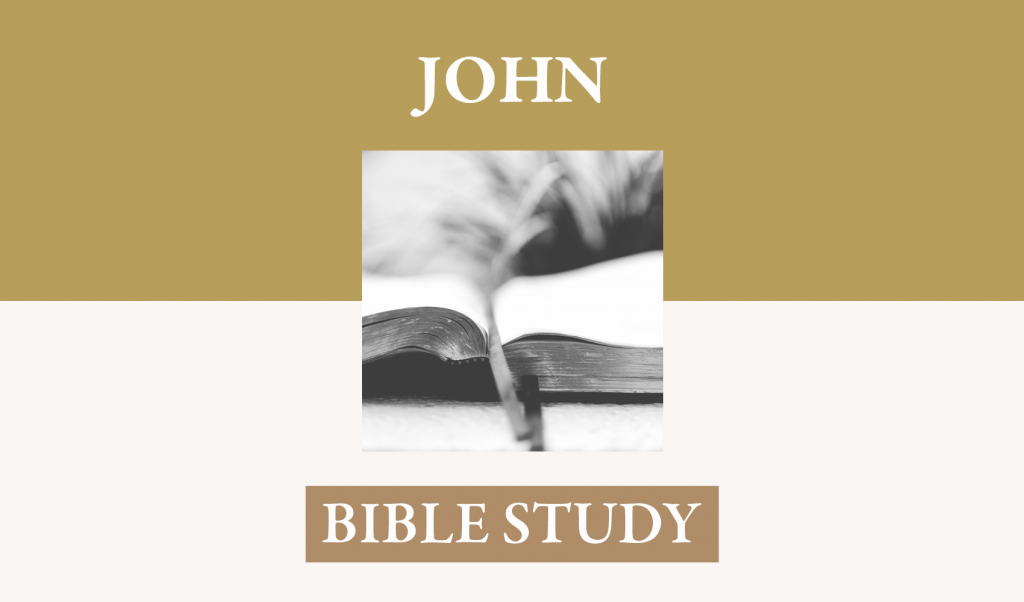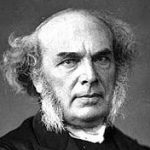The Point: When you fail, Jesus will restore you.
Peter’ First Denial: John 18:15-18.
[15] Simon Peter followed Jesus, and so did another disciple. Since that disciple was known to the high priest, he entered with Jesus into the court of the high priest, [16] but Peter stood outside at the door. So the other disciple, who was known to the high priest, went out and spoke to the servant girl who kept watch at the door, and brought Peter in. [17] The servant girl at the door said to Peter, "You also are not one of this man’s disciples, are you?" He said, "I am not." [18] Now the servants and officers had made a charcoal fire, because it was cold, and they were standing and warming themselves. Peter also was with them, standing and warming himself. [ESV]
[15-18] “The other disciple known to the high priest is probably the apostle John. John was a fisherman, but this does not mean that he came from an inferior social background. John’s father, Zebedee, is presented in Mark 1:20 as a man having hired servants. Moreover, it is not impossible that John himself came from a priestly family. Where was the high priest’s courtyard? The official high priest was Caiaphas, though Annas, the former high priest, may have been referred to under this designation as well. It is possible that Caiaphas and Annas lived in the same palace, occupying different wings bound together by a common courtyard. The sequence of references to the high priest in this chapter [13-14,19,24] shows that Annas is in view and that the courtyard is the atrium connected with his house. The mention of the servant girl at the door [17] confirms that the scene took place outside the temple area, for there only men held such assignments. Caiaphas’s quarters may have shared the same courtyard, so that even the second stage of the investigation would have been relatively private (though with at least some Sanhedrin members present). The other disciple spoke to the servant girl at the door and brought Peter in. Apparently, this doorkeeper was a domestic female slave, probably of mature age, since her role was one of responsibility, requiring judgment and life experience. The girl’s question to Peter, though apparently worded as if expecting a negative answer, may more likely be viewed as a cautious assertion. You also may allude to the other disciple. Peter’s reply is characterized by maximum terseness: I am not. Perhaps Peter simply wanted to get access to the courtyard without having to engage in conversation with this woman. It was cold. Nights in Jerusalem, which is half a mile above sea level, can be quite cold in the spring. Only John mentions that the fire was a charcoal fire. The presence of a fire confirms that these preliminary proceedings against Jesus took place at night, when the cold would move people to make a fire to stay warm. The description of Peter here suggests that he was trying to be as inconspicuous as possible.” [Kostenberger, pp. 513-515]
Jesus Answers the High Priest: John 18:19-24.
[19] The high priest then questioned Jesus about his disciples and his teaching. [20] Jesus answered him, "I have spoken openly to the world. I have always taught in synagogues and in the temple, where all Jews come together. I have said nothing in secret. [21] Why do you ask me? Ask those who have heard me what I said to them; they know what I said." [22] When he had said these things, one of the officers standing by struck Jesus with his hand, saying, "Is that how you answer the high priest?" [23] Jesus answered him, "If what I said is wrong, bear witness about the wrong; but if what I said is right, why do you strike me?" [24] Annas then sent him bound to Caiaphas the high priest. [ESV]
[19-24] “Then indicates that John now resumes his account of Jesus’ hearing before Annas. Again, Annas is referred to as the high priest, although the Romans had removed him from that office and appointed Caiaphas as the high priest. Apparently, the seasoned, aged Annas still wielded considerable high-priestly power. The fact that Jesus is questioned – a procedure considered improper in formal Jewish trials, where a case had to rest on the weight of witness testimony – suggests that the present hearing was more informal. The question addressed to Jesus regarding His disciples and His teaching suggests that the authorities’ primary concern was theological, despite the political rationale given to Pilate. The Jewish leadership seems to have viewed Jesus as a false prophet who secretly enticed people to fall away from the God of Israel – an offense punishable by death [Deut. 13:1-11]. Apparently, Annas hopes that Jesus might incriminate Himself on those counts. Jesus does not directly address the question from the high priest, who already knew the answer in any case, but merely points to the public nature of his instruction. Jesus’ answer takes the attention off His disciples and places it squarely upon Himself (note the repeated ‘I’ statements). The point of Jesus’ reference to the public nature of His instruction seems to be that the Jewish authorities would have been more than able to gather eyewitness testimony from those who had heard Jesus teach. I have said nothing in secret. The point is not that Jesus never spoke privately with His disciples but that His message was the same in private and in public; he was not guilty of plotting a sinister conspiracy. Jesus’ statement may also seek to establish an ironic contrast between the charge that he pursued His teaching ministry in a secretive fashion (which is manifestly untrue) and the covert way in which the authorities went about Jesus’ arrest (enlisting Judas, coming at night, etc.). Why do you ask me? Ask those who have heard me what I said to them; they know what I said. Jesus’ challenge is understandable, especially if the questioning of prisoners was considered improper in His day. This is further confirmed by the recognized legal principle that a person’s own testimony regarding himself was deemed invalid. Though an accused person could raise an objection (which must be heard), a case was to be established by way of testimony, whereby witnesses for the defendant were to be questioned first. If the testimony of witnesses agreed on essential points, the fate of the accused was sealed. The violation of this formal procedure here strongly suggests that Jesus’ hearing before Annas was unofficial. Ask those who heard me. Jesus is not being uncooperative and evasive, but rather he urges a proper trial in which evidence is established by interrogation of witnesses; the present informal hearing did not meet such qualifications. This assertive display of self-confidence before authority was in all likelihood startling. As Josephus shows, those charged would normally maintain an attitude of humility before their judges, assuming the manner of one who is fearful and seeks mercy. The official who strikes Jesus in response is one of the temple guards mentioned earlier as having taken part in His arrest. This blow in the face dealt Jesus by this official was another illegal action. The term used here denotes a sharp blow with the flat of one’s hand. Striking a prisoner was against Jewish law. In effect, Jesus is asking them to prove that what He said to the high priest is actually a curse. Annas’s only response is to send Jesus, still bound, to Caiaphas the high priest. Before Jesus can be brought to Pilate, charges must be confirmed by the official high priest, Caiaphas, in his function as president of the Sanhedrin. Sent need not imply movement to another building but may merely refer to changing courtrooms in the temple.” [Kostenberger, pp. 515-518]
Peter’s Second and Third Denials: John 18:25-27.
[25] Now Simon Peter was standing and warming himself. So they said to him, "You also are not one of his disciples, are you?" He denied it and said, "I am not." [26] One of the servants of the high priest, a relative of the man whose ear Peter had cut off, asked, "Did I not see you in the garden with him?" [27] Peter again denied it, and at once a rooster crowed. [ESV]
[25-27] “The sequence of the denials is now resumed. The scene may still be the courtyard of Annas’s house, or Annas and Caiaphas may have shared the same residence in which case there would have been one courtyard. As Peter was warming himself another approach was made. There is a difficulty arising from the fact that the Gospels do not agree as to the way in which the question was put. John does not particularize, but simply says they said to him. Matthew and Mark mention a maid in this connection [Matt. 26:71; Mark 14:69], while Luke speaks of a man [Luke 22:58]. Our difficulty probably arises because we unconsciously think that in each case one person asked the question and that was that. A moment’s reflection, however, shows that this would almost certainly not have been the case. With a group of servants talking informally round a fire in the courtyard when one asked whether Peter were a disciple it is almost certain that others would take the question up, especially if there were any hesitation about the answer. Clearly the servants, more especially the maidservants, are talking among themselves. While Luke says Peter replied to the questioner, in all the other three Gospels the denial is quite general and is not said to be addressed to the maids or to the crowd. What certainly happened was that somebody started the question and it was taken up by others. This is perfectly natural and it seems implied by Mark. It is not to be understood that John’s they means a chorus. It points rather to several people taking up the question from one to another. Again the form of the question expects the answer, ‘No’. This was the last place where one might expect to find one of Jesus’ followers. This may explain why no attempt was made to hold Peter for questioning, though he was asked a number of times whether he followed Jesus. The question was indeed put but the questioners did not treat the possibility seriously. And now, as before, they received a prompt emphatic denial. The last questioner was different, and his question looks for an affirmative answer. He was related to Malchus (only John tells us this), and therefore would have had a peculiar interest in the man who had struck out with a sword. But it had been done in an uncertain light, and the relative could not be absolutely sure that it was Peter that he had seen. All the more would this have been the case in that he was now seeing Peter in a very dim light indeed. A charcoal fire glows red, but does not emit bright flames. But he was more confident than the earlier questioners, as his words show. He refers to the incident, and asks whether he did not see Peter in the garden. For the third time Peter denies any connection with Jesus. John does not give his exact words this time, but simply says that he again denied it. He records the fact that a rooster crowed at that moment, but he says nothing of its effect on Peter.” [Morris, pp. 758-761]
Jesus Restores Peter: John 21: 15-19.
[15] When they had finished breakfast, Jesus said to Simon Peter, "Simon, son of John, do you love me more than these?" He said to him, "Yes, Lord; you know that I love you." He said to him, "Feed my lambs." [16] He said to him a second time, "Simon, son of John, do you love me?" He said to him, "Yes, Lord; you know that I love you." He said to him, "Tend my sheep." [17] He said to him the third time, "Simon, son of John, do you love me?" Peter was grieved because he said to him the third time, "Do you love me?" and he said to him, "Lord, you know everything; you know that I love you." Jesus said to him, "Feed my sheep. [18] Truly, truly, I say to you, when you were young, you used to dress yourself and walk wherever you wanted, but when you are old, you will stretch out your hands, and another will dress you and carry you where you do not want to go." [19] (This he said to show by what kind of death he was to glorify God.) And after saying this he said to him, "Follow me." [ESV]
[15-19] “After breakfast, Jesus takes Peter aside in order to commission him for service. In the context of John’s Gospel, Peter’s threefold affirmation of his love for Jesus mirrors, and offsets, his threefold denial of Jesus preceding the crucifixion. Although Jesus had expressed forgiveness to Peter and apparently had appeared to him privately prior to the present encounter [Luke 24:34; 1 Cor. 15:5], the public nature of his denial of Jesus demands that his reinstatement to service be equally public in full view of his fellow disciples. There is an element of déjà vu in the ensuing scene: a charcoal fire and three questions regarding Peter’s stance toward Jesus. The setting matches rather closely that of Peter’s previous denials of Jesus, though this time the outcome will be markedly different. It surely is significant that the one thing about which Jesus questions Peter prior to commissioning him for service is love, specifically, supreme love for Jesus Himself. In this call to love, Jesus does not treat Peter differently from other individuals whom He called to follow Him in discipleship. The fact that there are two different verbs for love used in the present passage has led some to believe that agape and phileo are distinct in meaning, but this is doubtful. The word agape, said to convey the notion of divine love, is used with reference to human love – and evil humans at that – in texts such as 3:19 and 12:43, and phileo, said to connote human love, is used for God the Father in 5:20 (where He is said to love the Son) and 16:27 (where He is said to love the disciples). We must discern the thrust of the question do you love me more than these? Is Jesus’ question whether Peter loves Him more than he loves these men? Is it whether Peter loves Him more than these men do? Or is Jesus asking whether Peter loves Him more than he loves these fish – that is, his profession. On one level, all three are true: Peter must love Jesus more than he loves other people or his natural profession, and he is called to love Jesus more than these other men do and to be willing to render extraordinary sacrifice on behalf of his master. Indeed, Peter earlier had claimed a devotion to Jesus exceeding that of the other disciples. Hence, in context, the second alternative seems most likely here: Jesus challenges Peter to love Him more than the other disciples do. Notably, the love required of Peter is primarily for Jesus rather than for the flock; it is to be a love of total attachment and exclusive service. Those who want to be used significantly in God’s service must be willing to make greater sacrifices for the Lord they serve. Feed my lambs … tend my sheep … feed my sheep. Shepherd imagery abounds in the Old Testament, which is pervaded by a yearning for shepherds who are devoted to God, care for His sheep, and carry out His will. The two verbs tend and feed jointly span the fullness of the task given to Peter. Three decades later, Peter wrote similar words to the churches entrusted to his care [1 Peter 5:1-3]. Jesus’ threefold repetition of His question may reflect the Near Eastern custom of reiterating a matter three times before witnesses in order to convey a solemn obligation, especially with regard to contracts conferring rights or legal dispositions. Peter is saddened that Jesus has asked him the same question a third time. Peter’s response, Lord, you know everything; you know that I love you, rather than pointing to actions of his own that prove his loyalty, defers to Jesus’ knowledge of him. If Jesus does not know that Peter loves Him, what can Peter say to assure Him? Perhaps at long last Peter has learned that he cannot follow Jesus in his own strength and has realized the hollowness of affirming his own loyalty in a way that relies more on his own power of will than on Jesus’ enablement. Likewise, we should soundly distrust self-serving pledges of loyalty today that betray self-reliance rather than a humble awareness of one’s own limitations in acting on one’s best intentions. Jesus now makes clear what prompted His questioning in 21:15-17 in the first place. Jesus sought not so much Peter’s triple retraction of his denial, and even less to embarrass him again before the other disciples; it is rather what awaits Peter in the future that prompts Jesus to reinforce his ties with Him as never before. In the ancient world, the expression stretch out your hands was widely taken to refer to crucifixion. Hence, Jesus almost certainly refers not merely to an unspecified martyr’s death on the part of Peter in the future but more specifically to martyrdom by crucifixion – the same kind of death that He Himself had suffered. Jesus said this to show by what kind of death he was to glorify God. Peter follows Christ not only in the kind of death he suffers but also in thus bringing glory to God. By the time John wrote his Gospel, Jesus’ prediction had been fulfilled. Jesus’ injunction to Peter here, Follow me, may, on a literal level, constitute an invitation to a private walk. On a more profound note, the command reiterates Jesus’ initial call for the disciple to follow Him. In light of Jesus’ words in 21:18-19, His call to Peter to follow Him now takes on a new and deeper meaning. The rest of Peter’s life must be lived in the shadow of the cross, just as Jesus’ was. As such a man, who has renounced all earthly ties and who has declared his supreme loyalty to Jesus, Peter is commissioned to serve as shepherd of Jesus’ flock as the Great Shepherd takes His leave.” [Kostenberger, pp. 595-599]
Questions for Discussion:
1. Analyze the three denials by Peter in 18:15-18; 25-27. Note the increasing intensity of those who question Peter: from a servant girl to a group of servants and officers to a relative of Malchus. What do you think was going on inside Peter as the questioning intensified? Contrast Peter’s behavior here in the courtyard to his claim in Matthew 26:33-35. What causes you to deny Christ, either in words, actions, or silence?
2. One of John’s goals in 18:19-24 is to show how the treatment of Jesus by the high priest was improper according to Jewish law. List the things that were done to Jesus that were improper. Note how Jesus takes the attention off His disciples and places it on Himself with the repeated “I” statements.
3. What was Jesus seeking to do with Peter in 21:15-19? Why the threefold questioning? Why the focus on love? Why does Jesus use shepherd imagery in commissioning Peter? Why the repetition of feed? How was Peter to feed the lambs and sheep of Jesus? What is the new and deeper meaning of Jesus’ command for Peter to follow me?
References:
The Gospel According to John, D. A. Carson, Eerdmans.
John, Andreas Kostenberger, BENT, Baker.
The Gospel According to John, Leon Morris, Eerdmans.

















